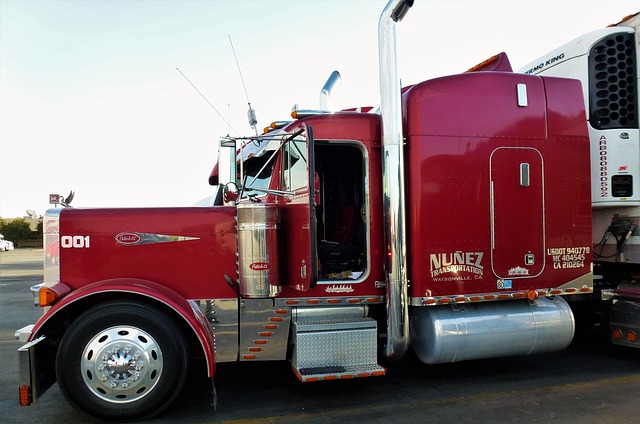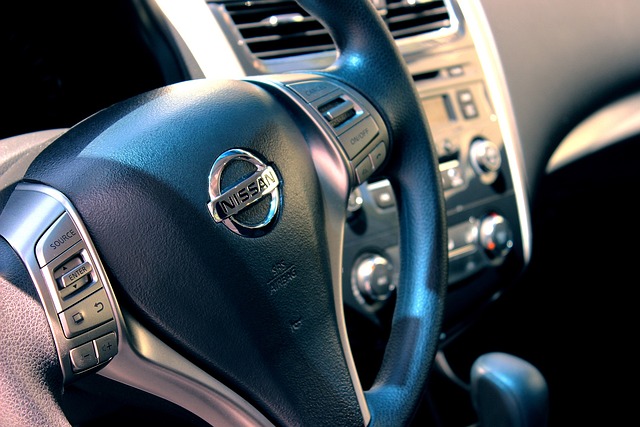Looking to register your car in California? This comprehensive guide walks you through the entire process, ensuring a smooth experience. From understanding eligibility requirements and gathering essential documents to visiting the DMV and paying fees, we cover it all. A crucial step involves verifying your vehicle’s VIN using reliable tools like a dmv vin verifier, a critical component for legal registration. Follow these steps, and you’ll be on your way to securing your California car registration in no time.
- Understand Eligibility Requirements for Car Registration in California
- Gather Necessary Documents for Car Registration
- Visit the DMV and Complete the Registration Process
- Verify Your Vehicle's VIN (Vehicle Identification Number)
- Pay the Required Fees for Car Registration in California
Understand Eligibility Requirements for Car Registration in California

Before you begin the registration process, it’s crucial to understand the eligibility requirements for car registration in California. To register your vehicle, it must meet specific criteria set by the Department of Motor Vehicles (DMV). One key step is ensuring that your car has passed a recent safety inspection, confirming it complies with state emissions standards. Additionally, the vehicle’s Vehicle Identification Number (VIN) must be verified, often through a process like mobile VIN verification or a traditional VIN inspection, to ensure its authenticity and prevent fraud.
The DMV prioritizes safety and security when considering vehicle registration, making it imperative that both the car and its documentation are up-to-date and legitimate. Properly completing these requirements will smooth your registration process, ensuring a swift transition to California’s roads legally and safely.
Gather Necessary Documents for Car Registration

Before you begin the registration process, it’s crucial to gather all the essential documents. In California, the Department of Motor Vehicles (DMV) requires specific paperwork for car registration, ensuring a smooth and efficient transaction. One vital document is the Vehicle Identification Number (VIN) verification report, which can be obtained through a reliable VIN verifier. This tool, whether used online or via a mobile vin verifier app, checks the vehicle’s history and ensures it’s not stolen or has any outstanding issues.
Along with the VIN inspection results, you’ll need to present proof of insurance, a valid driver’s license, and the vehicle’s title (if applicable). It’s important to check the DMV’s website for an updated list of required documents to avoid any delays during registration. Additionally, consider using a mobile vin verification service to streamline the process and ensure your car is road-ready in no time.
Visit the DMV and Complete the Registration Process

Once you have gathered all the necessary documents and passed the vehicle inspection, it’s time to visit your local California DMV office. Bring along your valid driver’s license, proof of insurance, and the required fees. A friendly agent will guide you through the registration process, which involves filling out a series of forms. They’ll also perform a Vehicle Identification Number (VIN) verification using a specialized tool like a mobile VIN verifier to ensure the vehicle matches the details in your paperwork. This step is crucial to prevent fraud and ensure compliance with California’s regulations.
During this visit, you can also request additional services such as a license plate or register for a mobile VIN verifier for a more convenient vin inspection experience. The DMV agent will walk you through the options and help you complete any outstanding requirements, ensuring your car is legally registered and ready to hit the road.
Verify Your Vehicle's VIN (Vehicle Identification Number)

Before you begin the registration process, it’s crucial to ensure your vehicle has a valid and accurate Vehicle Identification Number (VIN). This unique 17-character code serves as a digital fingerprint for your car and is essential for a successful registration at the California DMV. One effective method to verify your VIN is by using a mobile vin verifier app, which provides a quick and convenient way to check its authenticity. Simply download an app from reputable sources, enter your VIN, and it will offer detailed information about the vehicle’s history, including any prior owners or reported accidents.
As an additional step, you can also conduct a manual VIN inspection by checking the vehicle’s registration documents, engine, and chassis for discrepancies. Ensure that the numbers match across all records to guarantee accuracy. With these measures in place, you’ll be well-prepared to navigate the registration process smoothly at your local California DMV office or through their online services.
Pay the Required Fees for Car Registration in California

To complete the registration process in California, you’ll need to pay several fees associated with car registration. These include the registration fee, a vehicle identification number (VIN) verifier charge, and potentially other taxes or fees based on your vehicle’s type and emissions status. The DMV provides an online tool to estimate these costs, making it easier to budget for the process. One crucial step is to ensure that your vehicle passes the state’s emission standards; this can be done through a mobile VIN inspection or a visit to an authorized location, where professionals will verify your car’s VIN and check its compliance.
The DMV accepts various payment methods, such as credit cards, debit cards, and checks. It’s essential to have all necessary documentation ready, including your vehicle’s registration papers, proof of ownership, and identification. You can also opt for an extended registration period, which offers convenience but comes at an additional cost. With the help of a DMV VIN verifier, ensuring that your car meets all requirements is straightforward, allowing you to finalize the registration process efficiently.
Registering a car in California involves understanding eligibility requirements, gathering essential documents, and visiting a DMV office. Ensure you have all necessary paperwork, including proof of ownership and identification. During the process, verify your vehicle’s VIN using a trusted DMV vin verifier to maintain accurate records. Complete the registration by paying the applicable fees, ensuring your vehicle complies with state standards for roadworthiness and safety. Following these steps smoothly navigates you through the car registration process in California.
